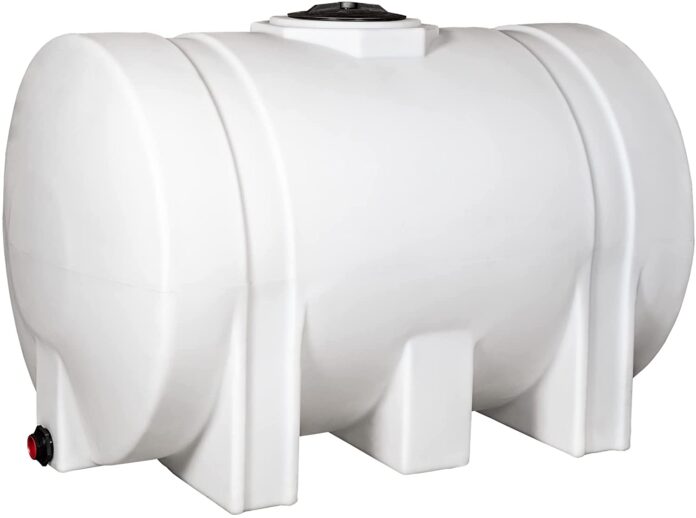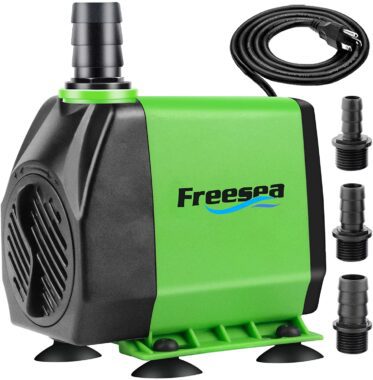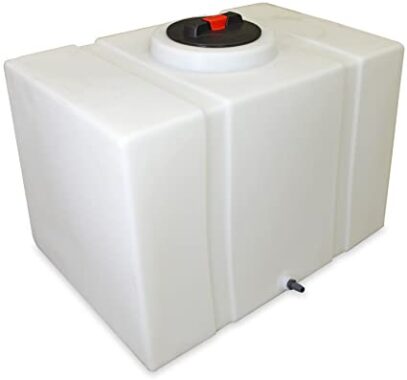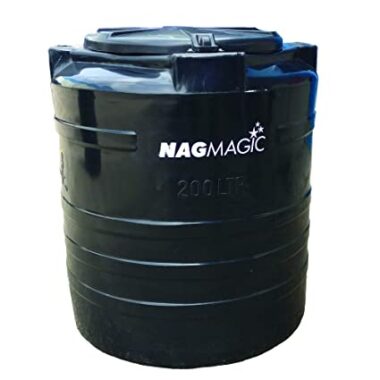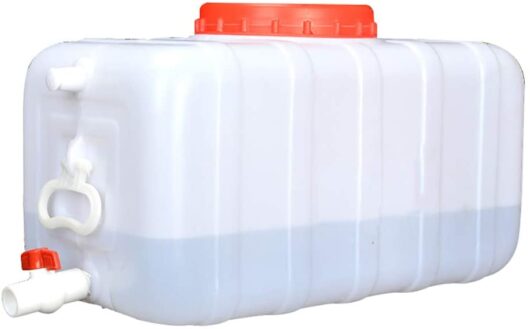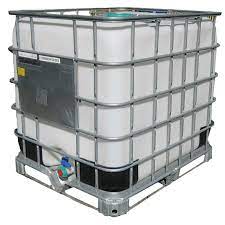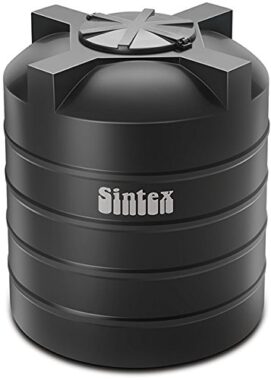Ghana, like many developing countries, faces challenges with consistent access to clean water. This guide explores the importance of water tanks in Ghana, addressing the benefits they offer and providing key factors to consider when choosing the right one for your needs.
Here are some of the top choices for water tanks in Ghana:
- Polytank: Known for their high-quality thermoplastic polyethylene construction, which offers excellent resistance to weather, abrasion, and chemicals. They come in various sizes and are a popular choice due to their efficiency and durability.
- Sintex: Another well-regarded brand that provides reliable water storage solutions.
- Polystar: Manufactured by New Star Poly Products Ltd., these tanks are a leading choice in the market.
- Watatank: Offered by Duraplast, these tanks are praised for their durability and come with optional water level indicators.
- Polyworld by Duraplast: A range of tanks that cater to different storage needs.
When considering a water tank, it’s important to think about the size you need based on your water consumption and the space available for installation. Prices can vary depending on the size and where you purchase the tank, but to give you an idea, a 1,000L tank may cost around ₵451, while larger tanks of 5,000L can range from ₵600 to ₵2,500.
Always ensure that the tank is installed on a flat surface and that the base is well-seated on the platform for stability and safety. It’s also advisable to check for any additional features like UV protection if the tank will be placed outdoors.
| Tank Size (Litres) | Price Range (GH₵) | Example Brands and Prices (GH₵) |
|---|---|---|
| 200 – 1,000 | 150 – 500 | |
| 1,000 – 5,000 | 600 – 2,500 | |
| 5,000 and above | 3,000 – 10,000 | |
| Specific Brands | ||
| Polytank Rambo 10,000 | Approx. 8,300 | |
| Sintex SLT40 4,000 | Approx. 4,530 | |
| GRP Water Tanks | Approx. 100,000 |
Remember, these are estimates and prices can change based on market trends and location, so it’s best to check with local suppliers for the most current information and deals.
Why Water Tanks Matter in Ghana
-
Unreliable Water Supply: Inconsistent water flow is a common issue in Ghana. Water tanks provide a reliable backup, ensuring a steady stream of water for daily activities, even during disruptions in municipal supply.
-
Benefits of Water Tanks:
- Constant Water Flow: With a water tank, you have a reserve of water readily available, eliminating the inconvenience of interrupted water supply.
- Improved Hygiene: Consistent access to water promotes better hygiene practices, such as frequent handwashing and cleaning, which can contribute to a healthier household.
- Reduced Reliance on Bottled Water: Water tanks can significantly decrease your reliance on bottled water, not only saving money but also minimizing plastic waste.
- Potential Cost Savings: While there’s an initial investment in purchasing a tank, you can potentially save money in the long run by reducing reliance on bottled water and managing your water usage during peak hours.
- Fire Safety: A readily available water supply from a tank can be crucial for initial fire suppression efforts, especially in areas with limited access to fire hydrants.
Choosing the Right Water Tank
This guide will delve deeper into crucial factors to consider when selecting a water tank in Ghana, such as:
- Tank Material: Durability, weight, and suitability for Ghanaian weather conditions will be addressed.
- Size and Capacity: We’ll explore factors influencing the ideal water storage capacity for your household needs.
- Placement and Installation: Considering space constraints and proper installation techniques for optimal tank functionality.
Note
This guide recognizes the unique context of Ghana and will provide insights on:
- Reputable Tank Suppliers in Ghana: We’ll explore trusted brands and suppliers catering to the Ghanaian market.
- Regulations and Permits: Any relevant regulations or permits required for water tank installation in Ghana will be discussed.
- Maintenance Tips: Essential maintenance practices to ensure the longevity and hygiene of your water tank will be provided.
By understanding the advantages of water tanks and carefully considering the selection process, you can make an informed choice that addresses your specific water storage needs in Ghana.
Key Factors When Choosing a Water Tank in Ghana
Determining the right water tank capacity is crucial for a reliable water supply in Ghana. Here are key considerations to ensure you select the ideal size:
- Average Daily Water Consumption: Research the average daily water consumption per person in Ghana. This provides a baseline for calculating your household’s needs.
- Household Size and Usage: Consider your current household size and water usage patterns. Do you have a large family with high water consumption (e.g., laundry, gardening)?
- Water Rationing Schedules: Be mindful of water rationing schedules in your area. A larger tank might be necessary if your region experiences frequent water cuts.
- Future Needs: Plan for potential future needs. Will your family grow? Factor in increased water usage as your household expands.
Micro-SEO: Water Tank Capacity by Household Size
| Household Size | Estimated Water Tank Capacity (Liters) |
|---|---|
| 1-2 People | 1,000 – 2,000 |
| 3-4 People | 2,500 – 3,500 |
| 5-6 People | 4,000 – 5,000 |
| 7+ People | 5,000+ |
Note: These are estimates. For a more precise calculation, consult a water storage professional or refer to resources provided by your local water authority.
By considering these factors, you can choose a water tank that meets your current and future water storage requirements in Ghana.
Water Tank Material Selection
Choosing the right material for your water tank in Ghana is crucial for ensuring its longevity, functionality, and cost-effectiveness. Here’s a breakdown of the most common water tank materials and their key characteristics:
1. Galvanized Steel Tanks
- Pros: Durable, affordable, readily available
- Cons: Requires periodic maintenance to prevent rust, may not be ideal for long-term storage due to potential taste impact
2. High-Density Polyethylene (HDPE) Tanks
- Pros: Lightweight, easy to transport and install, excellent UV resistance
- Cons: May be susceptible to physical damage if not handled carefully, cost can be higher than galvanized steel
3. Concrete Tanks
- Pros: Highly durable and long-lasting, suitable for underground placement
- Cons: Requires on-site construction, heavier weight makes installation more complex
4. Stainless Steel Tanks
- Pros: Excellent corrosion resistance, provides the highest water quality
- Cons: Most expensive option, heavier than most other materials
Water Tank Material Comparison Table
| Material | Durability | Cost | Maintenance | UV Resistance | Suitability for Underground Placement |
|---|---|---|---|---|---|
| Galvanized Steel | High | Moderate | Required | Moderate | Not ideal |
| HDPE | Good | Moderate-High | Low | Excellent | Not ideal |
| Concrete | Excellent | High | Low | None | Excellent |
| Stainless Steel | Excellent | High | Low | Excellent | Not ideal |
Choosing the Right Material:
The optimal water tank material depends on your specific needs and priorities. Consider factors like budget, desired lifespan, water usage, and installation requirements.
Location and Installation
Strategic Placement
The location of your tank significantly impacts its functionality and safety. Let’s delve into two primary placement options: above-ground and underground.
Above-Ground vs. Underground Tanks
Above-Ground: These tanks are readily visible and offer several advantages:
-
- Cost-effective: Installation is simpler and less expensive compared to underground tanks.
- Easy Maintenance: Regular inspections and maintenance are more accessible due to their visibility.
- Accessibility: Easier relocation if needed in the future.
Underground: Offer a visually discreet storage solution and come with their own set of benefits:
-
- Space Optimization: Frees up valuable surface area for other uses.
- Temperature Stability: The ground provides natural insulation, minimizing temperature fluctuations within the tank.
- Protection: Underground placement safeguards the tank from physical damage caused by weather or accidents.
Choosing the Right Spot
Beyond the type of placement, several factors influence the ideal location for your tank:
- Available Space: Ensure there’s sufficient room for the tank itself, as well as for maintenance access.
- Ground Conditions: The underlying soil should be stable and able to support the weight of the tank when filled.
- Strong Foundation: A solid foundation is crucial for both above-ground and underground tanks, ensuring stability and preventing leaks.
Regulatory Considerations
Installing a tank in Ghana requires adhering to specific regulations and obtaining necessary permits. It’s vital to consult with local authorities to understand the exact requirements for your specific location and tank type.
Additional Considerations for Water Tank Installation
Beyond the tank itself, several additional factors contribute to a well-functioning water storage system. Let’s explore these key considerations:
1. Essential Water Tank Accessories
Equipping your water tank with the right accessories ensures optimal performance and water quality. Here are some essential items to consider:
- Lids: Secure lids prevent contamination from dust, debris, and insects.
- Stands: Elevated tanks with stands improve water pressure and facilitate easier cleaning.
- Filters: Water filters remove impurities and improve water taste and clarity.
2. Tailoring Maintenance to Tank Material
The type of material your water tank is constructed from will influence its maintenance needs. Here’s a quick reference:
| Tank Material | Maintenance Considerations |
|---|---|
| Plastic | Regular cleaning to prevent algae growth |
| Metal | Periodic inspections for rust and potential leaks |
| Concrete | Occasional cleaning to remove sediment buildup |
3. Finding a Reliable Supplier and Installer
Partnering with a reputable supplier and installer in Ghana is crucial. Look for companies with:
- A proven track record of quality products and installations
- Experience with your chosen tank material
- Readily available customer support
Water Tank for Sale in Ghana
There are several places where you can buy water tanks. Common retailers include hardware, home improvement, and agricultural stores. You can also buy water tanks online.
Where to Buy Water Tank in Ghana
There are a few places where you can buy a water tank in Ghana. Some of the most popular places to buy a water tank in Ghana are:
- Local hardware stores
- Building supply stores
- Plumbing supply stores
- Online retailers
Water Tank Price in Ghana
The water tank price in Ghana will depend on the size and type of tank you choose. Smaller tanks can cost as little as GH₵200, while larger tanks can cost as much as GH₵5,000.
Water tank prices in Ghana vary depending on the size and quality of the tank. The prices also vary depending on the location of purchase. However, on average, a water tank costs around GH¢350.
Water tank Price List in Ghana 2025
The price list below shows the cost of different types and sizes of water tanks in Ghana as of 2025.
| Tank Size (Litres) | Price Range (GH₵) | Example Brands and Prices (GH₵) |
|---|---|---|
| 200 – 1,000 | 150 – 500 | |
| 1,000 – 5,000 | 600 – 2,500 | |
| 5,000 and above | 3,000 – 10,000 | |
| Specific Brands | ||
| Polytank Rambo 10,000 | Approx. 8,300 | |
| Sintex SLT40 4,000 | Approx. 4,530 | |
| GRP Water Tanks | Approx. 100,000 |
Please note that these are estimated prices and can vary based on location, seller, and market conditions. It’s recommended to contact local suppliers for the most accurate and up-to-date pricing.
Water Tank with Pump
A water tank with a pump is the best type of storage for water. The tank can be placed either indoors or outdoors. If you place it outdoors, ensure it is in a shady spot and not in direct sunlight, as the sun will heat the water and cause it to lose its pressure.
A water tank with a pump can be placed almost anywhere. The tank should be elevated off the ground to avoid water damage and to make filling and draining easier. The pump should be placed near the tank and close to the water source.
Water Tank Pump
The WT-1 water tank pump kit is an easy-to-install and operates pump kit designed to pump water from a water tank to its needed location. The WT-1 kit includes a 12-volt pump, a 20-foot hose, a water filter, and a water tank fitting. The pump kit is ideal for pumping water to a location such as a garden, a livestock watering tank, or a remote home.
100 Gallon Water Tank
100 Gallon Water Tank is a tank used to store water for domestic or irrigation purposes.
This 100-gallon water tank is manufactured from linear polyethene and is designed for water storage. It features a black colour and a threaded female outlet.
The tank measures 47-1/4″L x 24″W x 30-1/4″H and has a 4.5-gallon capacity.
This 100-gallon water tank with a pump is perfect for placement in your backyard, garden, or outdoor area. The tank features a pump that can push water up to 25 feet, making it easy to get water where needed. The tank is also made from heavy-duty plastic for durability and long-lasting use.
The 100-gallon water tank should be placed near a water source, such as a well or water main. The pump should be placed near the water tank and connected to the tank with a length of pipe.
This tank can be placed in several different locations. A few examples include:
- In the basement, next to the water heater.
- In the garage, next to the hose spigot.
- In a crawlspace, next to the plumbing.
Portable Water Tank
A portable water tank is a tank that can be moved easily and used to store water. Portable water tanks are often used by people who need to move water around a property, such as farmers and construction workers. They are also used by people who need to store large amounts of water, such as those living in areas prone to natural disasters.
There are many different types of portable water tanks. Some are made of plastic, while others are made of metal. Some tanks have a capacity of several hundred gallons, while others have a capacity of several thousand gallons.
Portable water tanks are often used in conjunction with water pumps. This allows people to pump water from the tank to the desired location.
1000 Gallon Water Tank
A 1,000-gallon water tank. It is made of high-density polyethene and has a UV inhibitor to help protect it from the sun’s rays. It has a 2″ threaded fill port and a 2″ threaded discharge port.
This tank is designed for water storage and is perfect for agricultural, commercial, or industrial applications. The tank has a capacity of 1,000 gallons and is made from heavy-duty plastic for durability. The tank is also UV stabilized to help protect it from the sun’s rays.
500 Gallon Water Tank
This tank holds 500 gallons of water. It contains a UV inhibitor and is constructed of high-density polyethene. It is made to be used above ground.
The 500-gallon water tank is a horizontal, cylindrical tank designed for commercial and industrial applications. It is made of high density polyethene and is FDA-approved for potable water storage. The tank’s seamless construction makes it durable and resistant to leaks. It also has a ribbed design which increases the strength and rigidity of the tank. The tank has an 8-inch lid which allows for easy access to the tank. The tank is also equipped with a 2-inch female threaded outlet.
Drinking Water Tank
The drinking water tank stores drinking water and dispenses it as needed.
There are a variety of water tanks that you can choose from depending on your specific needs. If you need a tank for drinking water, you must find a certified tank for potable water. If you need a tank for storing irrigation water, you will need to find a tank that is made for storing water without any chemicals or treatments.
Underground water tank
Underground water tanks offer a versatile and space-saving method for storing water for residential and commercial applications.
Benefits:
- Aesthetics: Underground tanks are hidden from sight, enhancing your property’s visual appeal.
- Location Flexibility: Tanks can be strategically placed near buildings for convenient access.
- Temperature Protection: The surrounding earth acts as a natural insulator, preventing freezing and ensuring consistent water temperature.
Considerations:
- Installation Costs: Underground tank installation typically requires excavation and may be more expensive than aboveground options.
- Maintenance: Access for cleaning and repairs might be slightly more complex compared to aboveground tanks.
Rainwater Harvesting Tank
A rainwater harvesting tank is a container that stores rainwater collected from a roof or other surface.
Rainwater harvesting is the process of collecting and storing rainwater for reuse. This tank is perfect for harvesting rainwater. It is made of durable plastic and has a large capacity of 10,000 gallons.
Rainwater harvesting tanks are perfect for homes that want to conserve water. These tanks collect rainwater from your roof and store it until needed.
Car Water Tank
Car water tanks are perfect for storing water while on the go. These tanks are small and easy to transport, making them perfect for emergencies.
Water Tank Overflow Alarm
These devices act as sentinels, alerting you when water levels in tanks rise beyond a safe limit.
Commonly used in industrial and commercial settings for large water tanks, overflow alarms prevent costly damage and potential environmental hazards.
Types of Water Tank Overflow Alarms
Water tank overflow alarms come in various configurations to suit different needs:
- Mounted Alarms: Permanently affixed to the tank itself, offering a direct line of defense.
- Proximity Alarms: Installed near the tank, providing a more flexible placement option.
- Portable Alarms: Ideal for temporary deployments or use with multiple tanks.
Choosing the Right Alarm:
Consider these factors when selecting a water tank overflow alarm:
- Tank Size and Type: Match the alarm’s capacity to the tank’s volume.
- Desired Alert Level: Loud alarms for critical situations, discreet alarms for monitoring purposes.
Float Valve for Water Tank
Float valves are ingenious devices that ensure consistent water levels in tanks. They maintain a pre-determined water level automatically, eliminating the need for manual monitoring and filling.
Here’s how they work:
- A buoyant float rests on the water surface.
- As the water level rises, the float ascends with it.
- The connected valve mechanism detects the float’s movement.
- Upon reaching the desired level, the valve shuts, stopping water inflow.
- Conversely, when the water level drops, the float descends.
- The valve mechanism reacts, opening the valve to allow water refilling.
Benefits of Float Valves:
- Prevents Overflow: Protects tanks from overfilling and potential damage.
- Maintains Water Reserve: Ensures a consistent water supply within the tank.
- Automates Water Management: Eliminates manual intervention for level control.
Applications:
Float valves have diverse applications, including:
- Domestic Water Tanks: Household cisterns, rainwater harvesting systems.
- Industrial Tanks: Manufacturing processes, irrigation systems.
- Aquaculture: Maintaining water levels in fish tanks, ponds.
Choosing the Right Float Valve:
Float valves come in various sizes and materials to suit specific needs. Consider factors like:
| Feature | Description |
|---|---|
| Tank Size | Valve capacity should match tank volume. |
| Water Pressure | Choose a valve compatible with your water system’s pressure. |
| Material Compatibility | Select a material resistant to the water content (e.g., potable water, saltwater). |
Poly Water Tank
Poly tanks are moulded from high-density polyethene resin compounded with UV inhibitors to extend the tank’s life. The tanks are rotationally moulded, producing a one-piece, seamless tank with no welds or seams. This process allows for a uniform thickness throughout the tank and produces a strong and durable tank.
The poly tank material is non-toxic and will not leach into the water. The tanks are also odourless and tasteless. The tanks are lightweight and easy to handle, making them ideal for applications where transport and installation are difficult.
Additionally, resistant to corrosion, the poly tank material won’t rust or corrode. The tanks are also impact-resistant and won’t dent or puncture under pressure. The tanks are also non-ignitable and flame-resistant.
The poly tank material is environmentally friendly and is made from 100% recyclable materials.
Ghana-Specific Resources
A. List of Water Tank Suppliers in Ghana:
- For a comprehensive list of water tank suppliers, you can refer to directories such as BusyList, CoverGhana, and GhanaYello.
B. Government Regulations on Water Tank Installation:
- The National Water Policy by the Ministry of Water Resources, Works and Housing provides guidelines on water resources management, urban water supply, and community water and sanitation.
- The National Building Regulations 1996, (LI 1630) outlines the standards for building materials, structural stability, and fire precautions, which may include regulations related to water tank installation.
C. Water Conservation Tips in Ghana:
- UNICEF Ghana works to ensure access to safe drinking water and supports strategies for effective drinking water supply services.
- The Ghana Water Company Limited offers practical tips such as not letting the faucet run while cleaning vegetables and using a water meter to check for hidden leakages.
For more detailed information, you may want to consult the specific documents or contact relevant authorities in Ghana.


